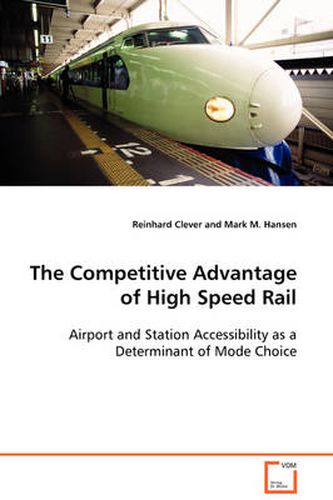Readings Newsletter
Become a Readings Member to make your shopping experience even easier.
Sign in or sign up for free!
You’re not far away from qualifying for FREE standard shipping within Australia
You’ve qualified for FREE standard shipping within Australia
The cart is loading…






This title is printed to order. This book may have been self-published. If so, we cannot guarantee the quality of the content. In the main most books will have gone through the editing process however some may not. We therefore suggest that you be aware of this before ordering this book. If in doubt check either the author or publisher’s details as we are unable to accept any returns unless they are faulty. Please contact us if you have any questions.
There are many things a train can do that an airplane cannot, e.g. go underneath city streets, split up into many pieces. A metaphor will illustrate the main point of this book: dogs are often not able to catch cats even though they are faster, because dogs cannot climb trees, jump onto rooftops, squeeze underneath fences, etc. High Speed Rail (HSR) planning up to this point, especially in North America, proposed to have dogs and cats compete on a wide open field. This book assesses the internal distribution advantage of High Speed Rail vis-a-vis air. It postulates a new paradigm: convergence of heretofore individually optimized urban and intercity rail networks into one coherent inter metropolitan high speed transportation system. The in-depth study of the competition between air and HSR in Japan, a country in which the two modes compete head-on and with little regulatory interference, will help any air or rail executive better take advantage of the post-deregulation environment. However, for transportation planners in North America, where widely dispersed urban areas deprive HSR from its traditional access advantage, it is a must-read.
$9.00 standard shipping within Australia
FREE standard shipping within Australia for orders over $100.00
Express & International shipping calculated at checkout
This title is printed to order. This book may have been self-published. If so, we cannot guarantee the quality of the content. In the main most books will have gone through the editing process however some may not. We therefore suggest that you be aware of this before ordering this book. If in doubt check either the author or publisher’s details as we are unable to accept any returns unless they are faulty. Please contact us if you have any questions.
There are many things a train can do that an airplane cannot, e.g. go underneath city streets, split up into many pieces. A metaphor will illustrate the main point of this book: dogs are often not able to catch cats even though they are faster, because dogs cannot climb trees, jump onto rooftops, squeeze underneath fences, etc. High Speed Rail (HSR) planning up to this point, especially in North America, proposed to have dogs and cats compete on a wide open field. This book assesses the internal distribution advantage of High Speed Rail vis-a-vis air. It postulates a new paradigm: convergence of heretofore individually optimized urban and intercity rail networks into one coherent inter metropolitan high speed transportation system. The in-depth study of the competition between air and HSR in Japan, a country in which the two modes compete head-on and with little regulatory interference, will help any air or rail executive better take advantage of the post-deregulation environment. However, for transportation planners in North America, where widely dispersed urban areas deprive HSR from its traditional access advantage, it is a must-read.